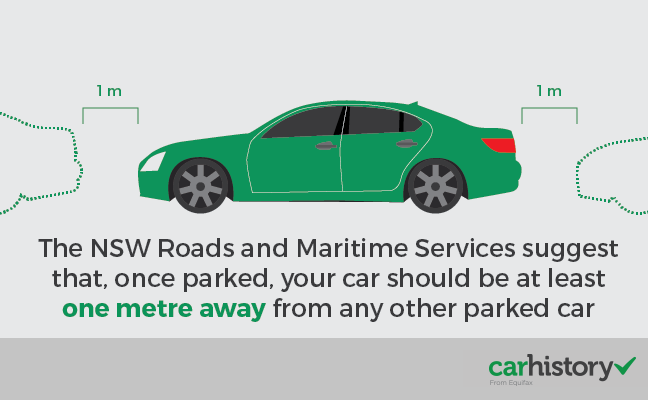
The vehicle identification number (VIN) is composed of 17 characters (digits and capital letters) that act as a unique identifier for the vehicle. A VIN displays the car's unique features, specifications and manufacturer.
The VIN can be found in a couple of places including on the car's registration label (1), on the compliance plate in the engine bay (2) or on the passenger side windshield (3), or on one of the door posts (where the door latches when it is closed) (4). See the image below:
Parallel parking can be the bane of every new driver's existence. The tricky manoeuvre can be complex, complicated and confusing.
However, once you've mastered this skill successfully, it means you'll no longer need to circle the block to find something simpler. You'll be able to tackle almost any park with ease.
Here are a few tips to perfect your parallel park.
Size it up
Having found a clear park, drive past it slowly to ensure that your car can fit. You'll also want to make sure there's enough room on either end of your car. The NSW Roads and Maritime Services suggest that, once parked, your car should be at least one metre away from any other parked car.1
Once you've sized up the park, roll up slowly until you are parallel with the car in front. There should be a car door's width between you and the car next to it.
It's all about the angles
Now comes the math. Get your angle right to ensure that your car is not too close or too far from the kerb. Too close and you will risk mounting the sidewalk; too far and your car will be sticking out into a lane of traffic. The SA government's Driving Companion guide says 300mm should be the ideal distance between your left tyres and the kerb.2 That's 30cm, the length of a regular school ruler.
Turn your wheel completely anti-clockwise and reverse slowly until your car is at a 45 degree angle from the kerb. Upon reaching this angle, stop, and then straight reverse for half a metre. You should be free to swing the front of the car into the park perfectly.

When in doubt, use the kerb
A little trick - bumping the kerb gently is fine and will help you park nice and close to it. Avoid doing this in your driving test as hitting the kerb is a no-no and may result in a fail.
When reversing your car into the park, still at a slight angle to the kerb, roll back slowly until the back of your rear left-hand tyre touches the kerb gently. Done with the utmost control, this will prevent uncomfortable jerking for you or your passengers.
Provided there is enough space at the front, rotate your steering wheel hard anti-clockwise and let your car creep forward to straighten up. This will also bring your rear tyre away from the kerb, whilst ensuring a perfect park.
These tips should apply to almost any standard car you drive. However, knowing your vehicle well allows for ultimate control.
If you're looking to buy a used car to practise your parallel parking for your practical driving assessment, make sure you get its CarHistory report first to ensure that it's not just your parking that is safe.
1NSW Roads and Maritime Services, Parking. Accessed November, 2015.
2SA Government My Licence, The Driving Companion. Accessed November, 2015.